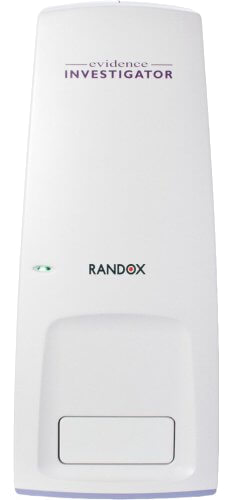Solutions
keyboard_arrow_downServices
keyboard_arrow_downSupport & Resources
keyboard_arrow_downCompany
keyboard_arrow_downContact
Get in touch to discover more
To find out more about the Randox Pancreatic GlycoMarker Array, enquire now.
Diagnosis & Prognosis of Pancreatic Cancer Patients
health_and_safety An improved method of monitoring pancreatic cancer compared to traditional measurement of CAI9-9 alone.
health_and_safety Simultaneous detection of CA19-9, CEA and AAG from a single patient sample delivers improved sensitivity and specificity for pancreatic cancer.
health_and_safety Results generated in 2 hours, enabling timely intervention and treatment plan implementation
health_and_safety The multiplexing power of patented Biochip technology offers accessible, low cost options for cancer screening.
health_and_safety Delivers valuable information for use in research, personalised medicine and development of novel therapeutics.
health_and_safety The Randox Pancreatic GlycoMarker Array can be readily implemented into routine laboratory settings to aid in pancreatic cancer screening
The Randox Pancreatic GlycoMarker Array utilises patented Biochip Technology for multiplexed glycosylated biomarker analysis, offering accessible, low cost options for cancer screening which can be readily translated to a routine clinical laboratory setting.
| CA19-9 | Cancer antigen 19-9 (CA19-9) is derived from an aberrant pathway during production of its normal counterpart disialyl Lewis-a is normally expressed on the epithelial surface of digestive organs, servers as a ligand for monocytes and macrophages, and aids in immunosurveillance. Epigenetic silencing of the gene for 2 → 6 sialyl transferase during early stages of carcinogenesis, leading to the abnormal synthesis and accumulation of sialyl Lewis-a (CA 19-9). Sialyl Lewis-a may also be involved in cancer invasion/metastasis as it is known to be a ligand for endothelial cell E-selectin responsible for cell adhesion. |
| CEA | Carcinoembryonic antigen (CEA) is an onogetal glycoprotein that is normally expressed by mucosal cells. The overexpression of CEA is observed in various malignancies. CEA is one of the most widely utilised tumor markers, with levels increasing 30%-60% in pancreatic cancer patients. |
| AAG | Alpha-I-Acid Glycoprotein (AAG) is an acute-phase reactant, synthesised in the liver in response to inflammation and tissue damage. AAG is a novel biomarker of pancreatic cancer. AAG expression is significantly associated with a shorter overall survival rate. |
The Evidence Investigator
The Randox Pancreatic GlycoMarker Array has been developed for the Evidence Investigator, a semi-automated benchtop immunoassay analyser.
The Randox Pancreatic GlycoMarker Array enables the simultaneous glycosylation-based detection of CA19-9, CEA and AAG from plasma samples for improved pancreatic cancer diagnosis.
Investigator brochure download


